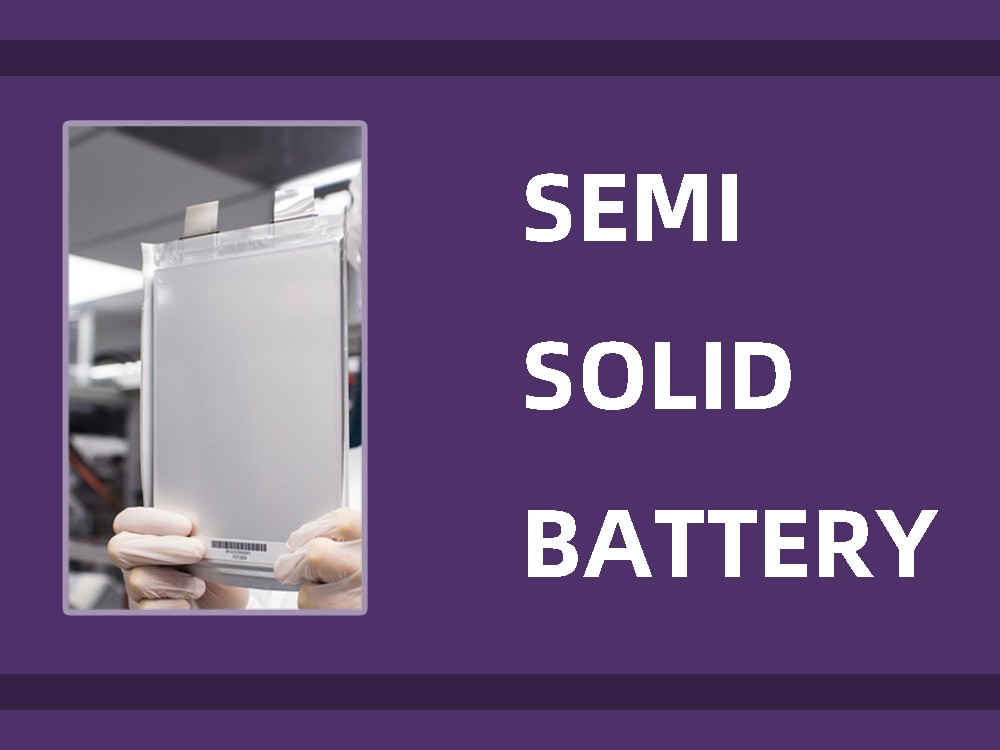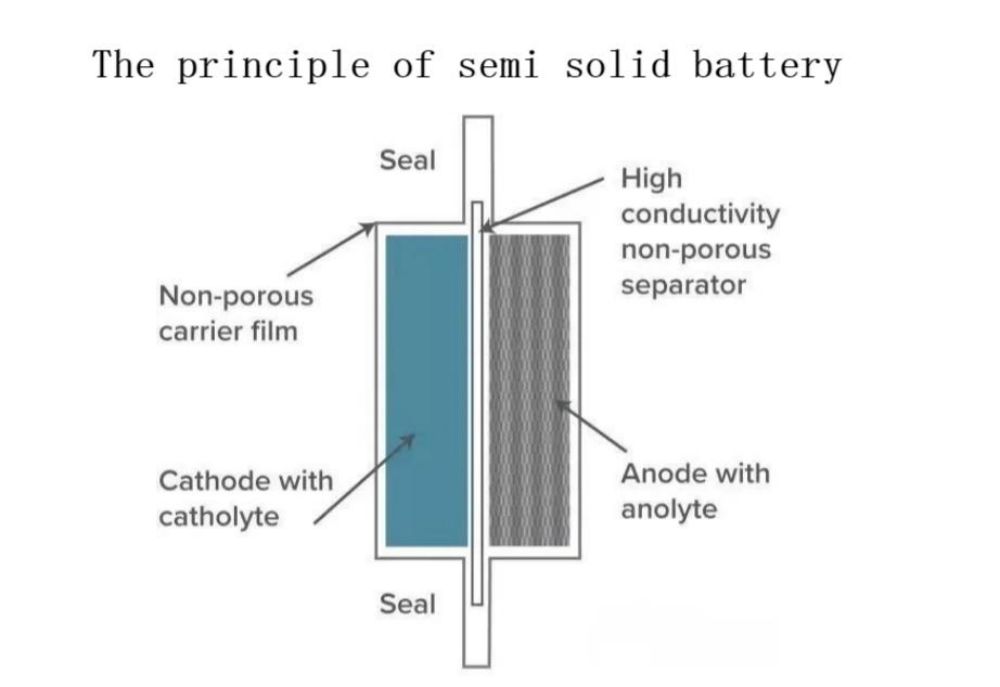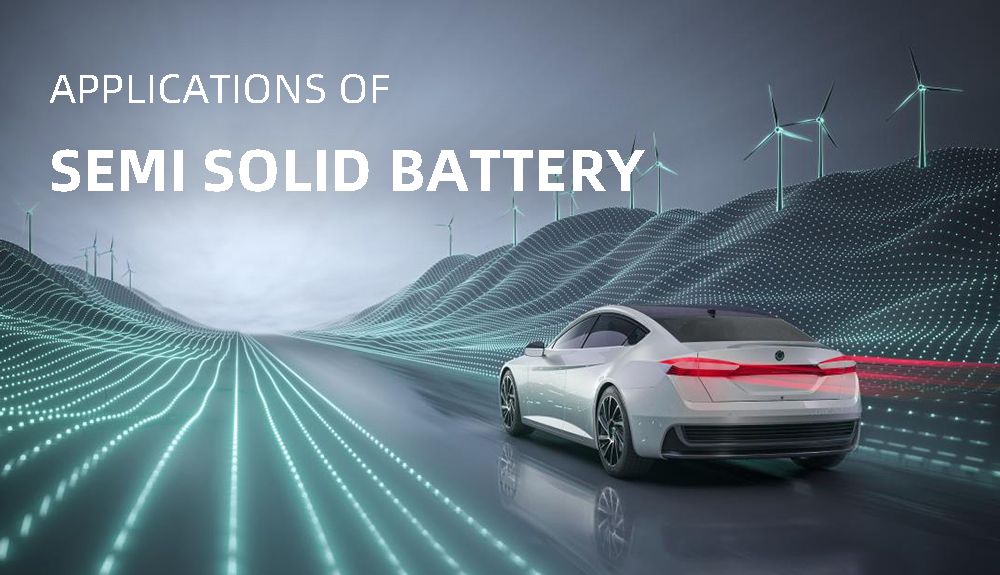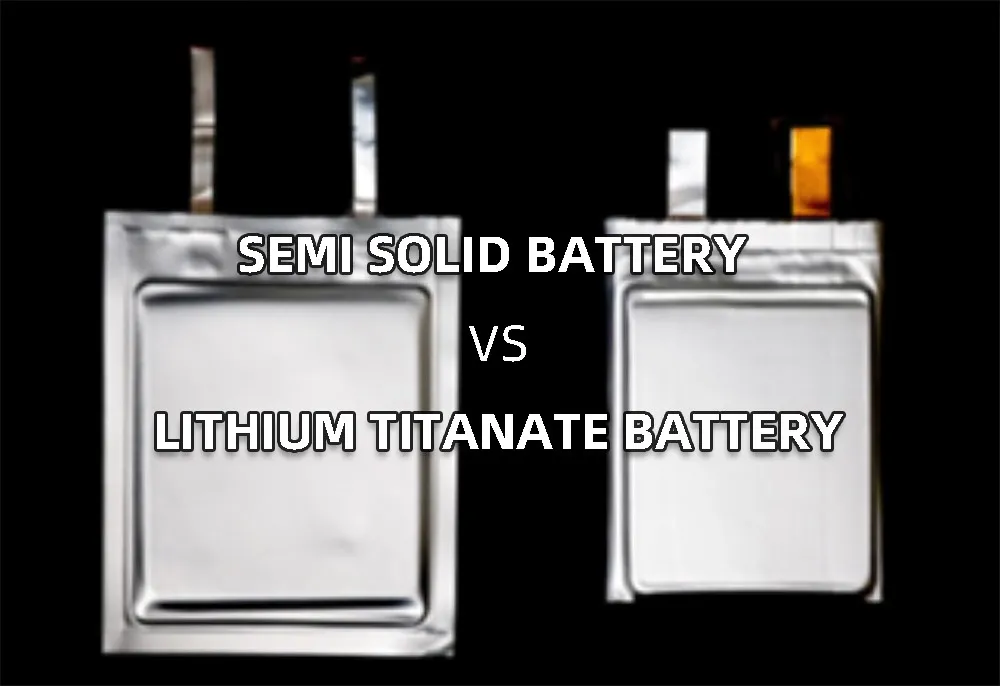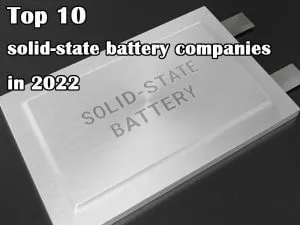Semi solid battery introduction and its advantages

What is semi solid battery
Or the mass or volume of the solid electrolyte in the monomer accounts for half of the total mass or volume of the electrolyte in the monomer.
Compared with existing lithium-ion batteries, semi solid batteries are smaller, more stable and safer, can achieve higher energy density, and are much cheaper than lithium-ion batteries. At present, based on the fact that solid state battery still have many problems in terms of scale, commercialization, and cost, many battery companies choose to speed up the research and development of semi solid batteries first.
The principle of semi solid battery
The electrodes are a slurry of fine lithium compound particles mixed with a liquid electrolyte, and the battery uses two streams of slurry, one positively charged and one negatively charged. Both beams of slurry pass through aluminum and copper current collectors with a water permeable membrane between them.
When the two beams of slurry pass through the membrane, lithium ions are exchanged, causing current to flow on the outside. To recharge the battery, it is only necessary to apply a voltage to cause the ions to recede across the membrane.
The main advantages of semi solid battery
1. High energy density
The upper limit of energy density of liquid lithium-ion batteries is generally recognized as about 300Wh/kg-400Wh/kg. The theoretical energy density of solid-state batteries is as high as 700Wh/kg, which is almost double the data of the most advanced lithium batteries.
2. Not afraid of low temperature
The solid electrolyte is used in the semi solid battery, and the electrolyte in solid form will not affect the performance of the battery due to low temperature. This effectively solves the problem of battery life discounts for pure electric vehicles in winter.
3. Higher security
Semi solid battery or solid-state battery has no liquid substance, or the liquid substance is greatly reduced. Therefore, when damage or puncture occurs, spontaneous combustion or explosion will be effectively avoided.
4. Longer service life
According to the available data, at present, the semi solid battery is cycled 2000 times at room temperature, and the capacity retention rate is more than 85%. Under the same conditions, the common liquid battery is cycled 1200 times, and the capacity retention rate is only about 80%.
Applications of semi solid battery
1. Drones
In the field of drones, it can be said that it is the field that uses the most lithium drone battery. Due to the limitation of battery life, breakthroughs in the energy density of drone batteries have always been the pursuit of industrial drones, competitive drones, and entertainment drones.
Shenzhen Grape Battery Co., Ltd., the owner of the more prestigious Grignard battery brand in the industry, has made considerable achievements in this regard. The energy density has increased to 275Wh/kg~290Wh/kg, which is more than 25% higher than the industry level.
2. New energy vehicles
As we all know, the reason why new energy vehicles have not been widely recognized by the public quickly is that they cannot be further improved in terms of energy density and battery life. Now one of the top 10 energy storage battery companies in China BYD’s blade batteries are all newly developed high-energy-density batteries. But for semi solid battery, if it is well used in new energy vehicles, it will not be a problem to break through a certain limit.
3.Smart wearable devices
Nowadays, smart wearable devices can be said to be a red sea market that major manufacturers are scrambling to enter. Batteries similar to bracelets may have a particularly long battery life.
Test of semi solid battery vs lithium titanate battery
For the safety performance of semi solid battery and lithium titanate battery, some researchers have conducted safety tests on them. According to the relevant standards, the researchers conducted acupuncture tests, extreme overcharge tests, short circuit tests, and extreme heating tests on the two batteries, and evaluated the application of the two batteries in rail transportation based on the test results.
Performance parameters of semi solid battery vs lithium titanate
| Battery type | Capacity/(Ah) | Energy density /(Wh · kg’) | Maximum sustainable current/A | Internal resistance / m 2 | Quality/g |
| Lithium-iron phosphate semi solid battery | 36 | 163.93 | 108 | 0.646 | 685±10 |
| Lithium titanate battery | 20 | 87.94 | 300 | 0.395 | 500±5 |
①Acupuncture experiment
| Battery type | Test result | Voltage/V | Temperature/℃ | ||
| Before the test | After the test | Before the test | Highest Temperature | ||
| Lithium-iron phosphate semi solid battery | Pass | 3.351 | 3.293 | 21.7 | 34.5 |
| Lithium titanate battery | Pass | 2.662 | 2.493 | 21.7 | 24.9 |
Through the acupuncture test, there was only a slight pressure drop and a certain temperature rise in the two groups of test subjects, and there was no obvious phenomenon other than that.
②Ultimate overcharge test
| Battery type | Test result | Voltage/V | Temperature/℃ | Final phenomenon | ||
| Before the test | After the test | Before the test | Highest Temperature | |||
| Lithium-iron phosphate semi solid battery | Pass | 3.3575 | 3.7611 | 17.6 | 72.1 | Bulge + deflated battery |
| Lithium titanate battery | Fail | 2.6741 | 0 | 17.1 | 937 | Bulge + fire |
In the extreme overcharge test, the lithium titanate battery caught fire, and the lithium iron phosphate semi solid battery deflated after a period of swelling and was overcharged to 19V.
According to the test curve, the overcharge duration of the lithium iron phosphate semi solid battery is only 10 minutes, and the SOC is 117% when an overcharge fault occurs; the overcharge duration of the lithium titanate battery is 48 minutes, and the SOC is 218% when an overcharge fault occurs.
Before the fire, the temperature rise rate of the lithium titanate battery was lower than that of the lithium iron phosphate semi solid battery, and the temperature suddenly changed at the moment of the fire. Both batteries can meet the requirements of relevant standards, and the overcharge capability (tolerance of overcharge time) of lithium titanate battery is much higher than that of lithium iron phosphate semi solid battery.
③Short circuit test
| Battery type | Test result | Voltage/V | Temperature/℃ | Final phenomenon | ||
| Before the test | After the test | Before the test | Highest Temperature | |||
| Lithium-iron phosphate semi solid battery | Pass | 3.353 | 0.001 | 16.8 | 103.1 | Bulge |
| Lithium titanate battery | Pass | 2.667 | 0 | 19.7 | 102.4 | Nothing |
In the short-circuit test, the maximum short-circuit current of the two batteries is greater than 800A, and the maximum temperature rise is about 100K. The lithium iron phosphate semi solid battery has obvious swelling phenomenon, and the lithium titanate battery has no obvious phenomenon.
④Limited heating experiment
| Battery type | Test result | Voltage/V | Temperature/℃ | Final phenomenon | ||
| Before the test | After the test | Before the test | Highest Temperature | |||
| Lithium-iron phosphate semi solid battery | Fail | 3.346 | 0 | 14.3 | 343.5 | Smoking violently |
| Lithium titanate battery | Fail | 2.643 | 0 | 18 | 310.5 | Smoking violently |
During the extreme heating test, both groups of batteries experienced sudden temperature changes below 200°C, and at the same time, the voltage dropped rapidly to 0V, accompanied by severe smoking. The over-temperature capability of the two tested products is much higher than the 130°C specified in the standard, which has high safety.
It can be seen from the test that both the lithium iron phosphate semi-solid battery and the lithium titanate battery have high safety. Lithium titanate battery has high overcharge capacity and can withstand overcharge for a long time; Although the lithium iron phosphate semi-solid battery has a poor overcharge ability, it has no fire phenomenon after overcharge, and has good safety. Researchers believe that lithium titanate batteries have high-rate charge-discharge performance and can be used as the preferred power battery in the field of rail transportation.
Although the power performance and lifespan of lithium iron phosphate semi-solid batteries are not as good as those of lithium titanate batteries, in some specific scenarios(Such as auxiliary systems for rail transit, backup power supplies, and shunting power batteries with low power performance requirements) also have good application prospects.

